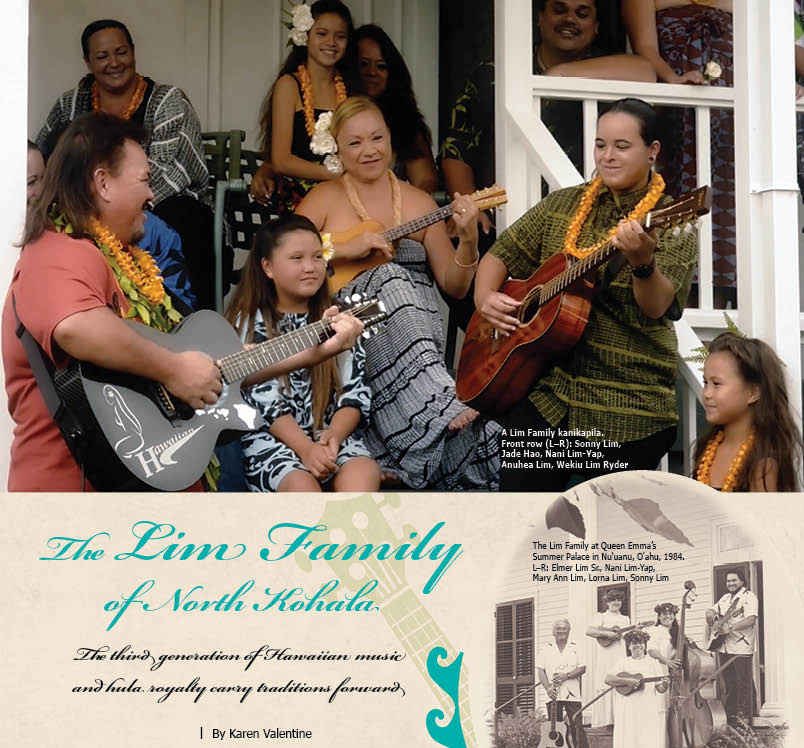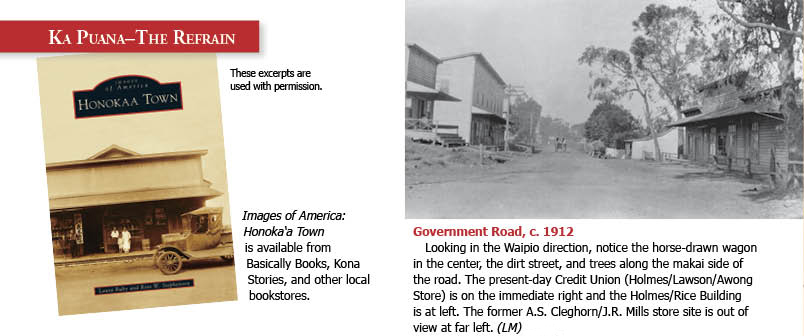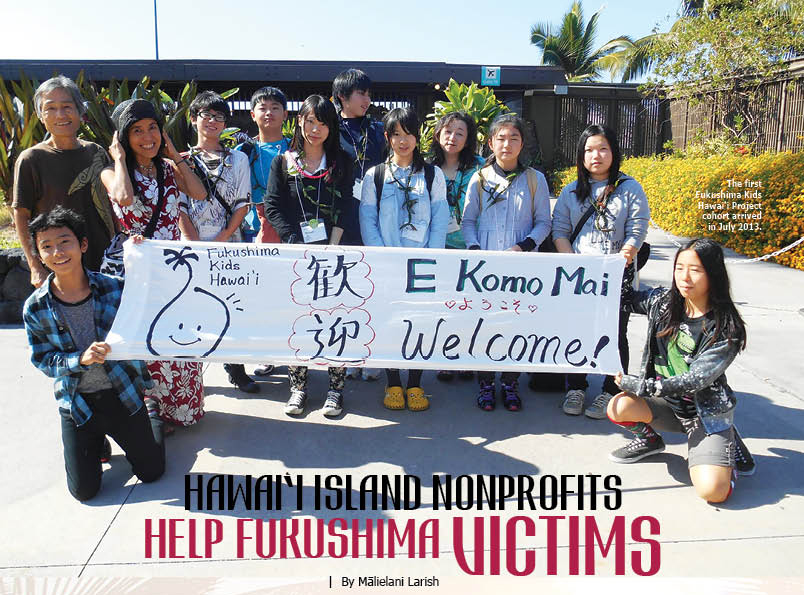
The Lim Family of North Kohala: The Third Generation of Hawaiian Music and Hula Royalty Carry Traditions Forward
By Karen Valentine
How one family can encompass so much talent is almost beyond the comprehension of us mere mortals. Yet, in the presence of Hawaiian music and hula royalty, the Lim Family makes it seem easy as they share with great style and humility the stories and melodies passed down from their kūpuna (elders). They remain faithful to their roots as their songs and dances have a distinct focus on celebrating in particular their home district of North Kohala, the birthplace of King Kamehameha the Great. The Lim family themselves are descendants of Alapa‘inui, once the ruling chief of the island of Hawai‘i.
Music and dance traditions of today have often strayed from the old style where it was passed down generation to generation, so it’s rare for a big family of talent to stick together, still living in Kohala, still performing together the old songs, even as they pack their guitars, ‘ukulele and pā‘ū skirts on a plane to Japan or Taiwan. The family is crisscrossing the globe on a regular basis to share with the world their pure, unadulterated style of Hawaiian music, oli (chant), hula, and cultural protocol. At home, too, they never stop singing and playing, whether at the lū‘au of Mauna Kea Beach Resort, at Mauna Lani Resort, or on a cousin’s front porch.
“To my father, family came first,” says Kumu Hula and musician Nani Lim-Yap, second daughter in the family of six. “He emphasized it was really important. You need to keep family together no matter what.”
The word “together” takes on a higher meaning in reference to the beautiful harmonies and ensemble performing the family does together, with angelic singing, virtuoso guitar, and exquisite hula combining together, not one outshining the other.
Mary Ann and Elmer Lim, Sr., Mom and Dad, started it all when the Parker Ranch worker and hotel employee married and started making music together at home, as well as raising talented, and now multiple-award-winning, kids.
Their offspring include eldest daughter and Kumu Hula Leialoha Lim Amina; then Nani; daughter Charmaine “Minnie” Lim-Davis, hula dancer and proprietress of Minnie’s Diner in Kapa‘au; Elmer Jr., better known as Hawaiian slack-key musician “Sonny” Lim; and Lorna Lim-Ryder, musician, songwriter, and recording artist. Sadly, their brother, James “Kimo” K.H. Lim, also an award-winning hula dancer, was tragically killed in a helicopter crash at age 29.

Labels are difficult, as all Lim family members sing, play music, and dance hula, a foundation that strengthens their ability to communicate the mana or spirit of the music, oli, and dance.
“Growing up, we lived far out in the boonies on Parker Ranch. We had to make our own entertainment. It’s how it all started,” says Nani. “We just imitated our mom and dad, at first with the broom and the rake.”
Brother Sonny chimes in, “I think the first thing we used that made noise was the spoons. Then our oldest sister Leialoha went away to Kamehameha School and when she came home she could play three chords. We had only one ‘ukulele at home, and we knew the old songs, so we just started playing. In the old way of learning, that was it. You just watch, listen. There were no classes then. It was all about learning the songs.”
“My father and mother used to take us riding in the car all the time,” says Nani. They packed five kids in their Rambler station wagon, going to Hilo on the old roads to shop or visit relatives and friends.
“When we first started playing, we had one list of songs, a medley,” says Sonny. “Riding in the car with our one ‘ukulele, the first kid would start. If you miss a song you have to pass the ‘ukulele. We sang the first verse only and had to keep going and going.”
Nani adds, “The person who could play and sing all the songs, you were the winner. Everyone wanted to hang on to that ‘ukulele. You didn’t want your brother or sister to get it.”
Soon their parents started playing professionally at Mauna Kea Beach Hotel, and the kids would be included in the act. Sonny was 12 when he started playing with Mom and Dad. A natural with tone and rhythm, he picked up instruments easily—first ‘ukulele, then guitar. He was also fascinated with the upright bass. “I would stand up on the chair to play,” he says. “Music was easy for me to relate and pick up the accompaniments.”
Nani too, as well as the other sisters, picked up the ‘ukulele, guitar, and upright bass. As one grew up and started going away to college, another would step into the group.
Matriarch Mary Ann still regularly performs today at Mauna Lani Bay Resort after celebrating her 80th birthday this year. (see Ke Ola feature story, May–June 2016).
While still in high school, Sonny started playing with the Mākaha Sons of Ni‘ihau, flying to O‘ahu on weekends.
“With my earnings I bought an old car for $175, a ‘63 Chevy Impala. It was so big, nine guys could fit in it and also our whole sound system.”
Sonny’s association with the Mākaha Sons led to sister Leialoha marrying her first husband, “Skippy,” late brother of the famed “Bruddah Iz” (Israel Kamakawiwo‘ole); and Sonny eventually being inducted into the Hawaiian Music Hall of Fame with them in 2012.
Sonny Lim developed his talent by watching and modeling after other slack key guitar masters, including Gabby Pahinui and family friend, Uncle Fred Punahoa, eventually becoming a slack key virtuoso in the style which, coincidentally, originated in his home district of North Kohala.
Over the past two decades he has performed and recorded with the top musicians in Hawai‘i. He was featured on the first Grammy award-winning Hawaiian music CD, Slack Key Guitar Volume 2. He also gained a Grammy nomination for his first solo CD, Slack Key Guitar: The Artistry of Sonny Lim.
The entire Lim Family was awarded a Nā Hōkū Hanohano Lifetime Achievement Award in 2012. Other Nā Hōkū awards had already stacked up for them, including Song of the Year honors in 2010 for Lorna Lim-Ryder.
Then there is hula. Perennial winners at the Merrie Monarch Hula Festival, Lim family hālau have made comeback after comeback, the most recent being this year, when Nani Lim-Yap formed a brand new hālau, named Manaola after her son, and walked away with third place honors in Wahine Overall and second place in Wahine Kahiko competitions. The new hālau was formed only last September after she left her previous partnership with sister Leialoha Lim-Amina, as co-kumu of Halau Na Lei O Kaholoku. Lim-Amina and Lim-Yap together dominated the wahine group competition in the mid-2000s, winning the Wahine Overall titles in 1993, 2004, 2005, and 2006, and the Wahine Kahiko titles in 2004 and 2005. Lorna accompanied them with music.
Nani expresses her feelings as her mission is different with the new hālau. “This time, for me, it’s really about the continuing on of what I’ve taught for all these years. What we see now as a family is our youth upcoming and supporting them and their goals in music and hula. It’s a legacy—our kuleana (responsibility) from our parents—so that it never dies.”
Charmaine’s daughter, Namakana, won the title of Miss Aloha Hula in 2006.
Nani’s son, Manaola Yap, now 29, won Master Keiki Hula in the big keiki hula competition on O‘ahu as a youngster. He is an accomplished dancer, chanter, and musician, and also now a fashion designer. Using his knowledge gained from hula costumes and styling, he applies the ancient art of ‘ohe kāpala (bamboo stamp) into intricate designs and patterns. Manaola Hawai‘i creations are sold exclusively at Lehua Designs in Ala Moana Center in Honolulu.
“I knew being in a family with parents that were such influential people in the community, music, dance and all of that, I knew I was going to have to fill those shoes in some way, and fashion was the avenue that I took,” says Manaola.
“The young ones are progressing so fast in music and dance,” said Nani. “It’s amazing, they pick it up so quickly.”
Her son is also creating new music, using the lyrics of old in musical stylings of today, says Sonny. “We support him in the new concept. He’s writing new songs in old language and old style but in the music style of now. For example, he may be creating rap and techno in Hawaiian. It’s just the evolution. By doing that, it will mark the time he did it, so the era is remembered.”
Sonnyʻs own daugher, Anuhea, has become a slack key musician in her own right and travels and plays music with her dad.
“We were fortunate enough to learn the old way by watching and now they do, too. The young ones are picking it up in pretty much the same way. My daughter and hers [Nani’s] get together and play. It’s still the best way to learn for its retention value. When we travel and play as the Lim Family, our mission is to try to include and implement everybody in the program. We’ll go to California for the upcoming slack key festival, for example, and we take everyone,” says Sonny.
Back home, the Lim Family, in various forms, has entertained at the Mauna Kea Beach Resort Hotel’s lū‘au for the past five decades, continuing today with Nani and husband Ed Yap’s company, Traditions Hawai‘i.
Sonny often runs into his mom at the Mauna Lani when he plays solo at restaurants there when he’s in town.
“In the last five years we’ve all been incredibly busy going to Japan. Hula is so big there, I see more Hawaiian musicians in the Tokyo airport than here,” Sonny says.
Leialoha is busy with her hālau at hula festivals and teaching workshops in Japan and the mainland. Lorna just started a new hālau too in Kohala.
“Every time we see each other, our famous line is ‘How long you going to be home?’” says Nani, laughing with her infectious smile and beaming face. ❖
If you would like to see the Lim Family together, they will be featured at an upcoming “Twilight at Kalahuipua‘a” hosted by Danny Akaka at his monthly full moon talk-story event at Mauna Lani Resort.
Photos courtesy The Lim Family
Contact Sonny Lim
Contact writer Karen Valentine



